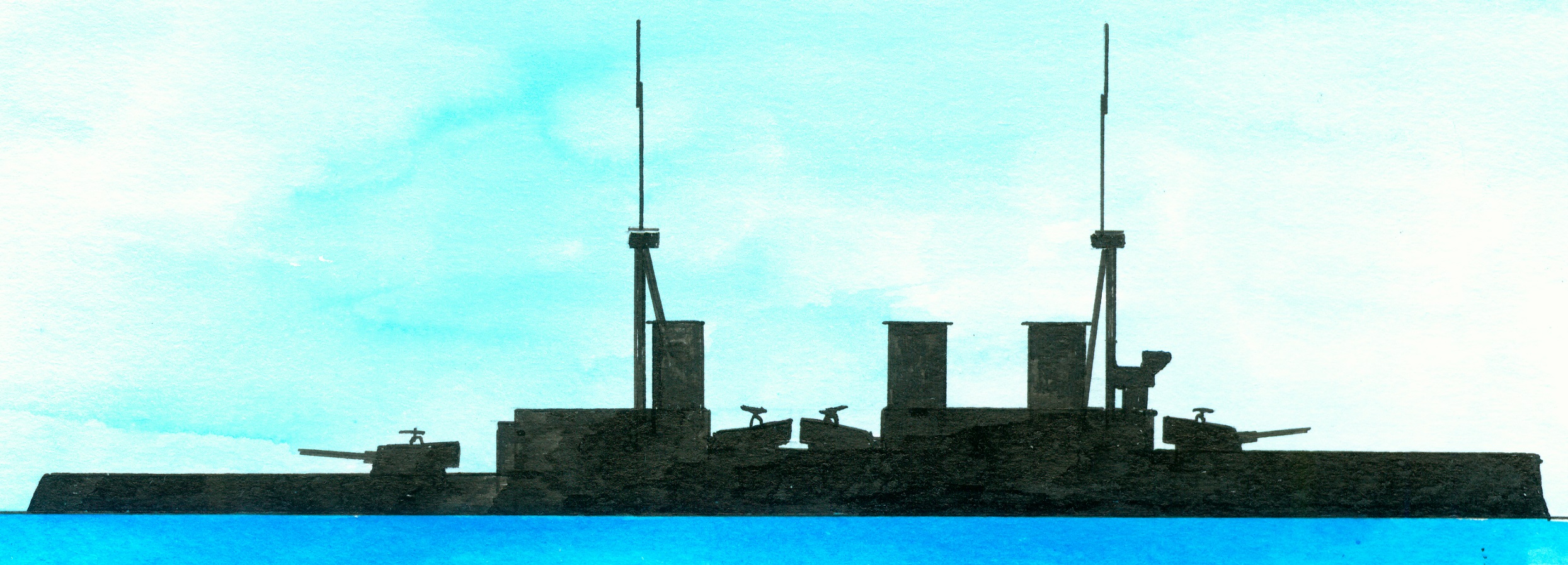Invincible-class
An item reported that the nationalists John Redmond (1) and Dillon (2) and O’Connor (3) first spoke with Lloyd George (4) and afterwards with admiral Beresford (5) about the denial by the First Lord of the Admiralty Mackenna (6) that the British battleship HMS Invincible (7) was useless.
Notes
1. John Edward Redmond (1 September 1856 Kilrane, Ireland-6 March 1918 London, England, Irish nationalist politician, leader of the Irish Parliamentary Party 1900-6 March 1918?
2. John Dillon (4 September 1851 Blackrock, Dublin, Ireland-4 August 1927 London, England), leader of the Irish Parliamentary Party 6 March-14 December 1918?
3. Thomas Power O’Connor (5 October 1848 Athlone, County Westmeath-18 November 1929 London, England)., Irish nationalist and member of parliament,
4. David Lloyd George (17 January 1863 Chorlton-on-Medlock, Manchester, England-26 March 1945 Ty Newydd, Wales, United Kingdom), Liberal politician, at that moment Chancellor of the Exchequer 12 April 1908-25 May 1915.
5. Charles William de la Poer Beresford, 1st Baron Beresford (10 February 1846 Curraghmore, Ireland-6 September 1919 Langwell, Berriedale, Caithness, England), served within the British Royal Navy 1859-1911 ending his career as admiral and member of parliament. Beresford and Fisher violently disagreed about how to reform the British Royal Navy and introducing new technologies.
6. Reginald Mckenna (6 July 1863 London, England-6 September 1943 London, England), Liberal politician, First Lord of the Admiralty 12 April 1908-23 October 1911.
7. Laid down at the shipyard of Armstrong, Whitworth&Co. Ltd, Tyneside, Elswick, England on 2 April 1906, launched at 3 p.m. by Lady Allendale on 13 April 1907, officially completed on 16 March 1909, commissioned on 20 March 1909 and sunk on 31 May 1916 during the Battle of Jutland when a magazine exploded after the Q turret was hit. Building costs 1.725.739 (with guns)-1.768.995 (without guns) pound sterling.Of the Invincible-class battle cruisers consisting of the Invincible, Indomitable and Inflexible. Preceded by the Minotaur-class armoured cruisers and succeeded by the Indefatigable-class. The concept for the Invincible-class battle cruisers came from the British admiral Sir John Fisher. The idea was to design a ship fast enough to escape from stronger opponents like battleships and strong enough to destroy nearly all other ships while the battle cruisers were as heavily armed as most of the battleships of their time. This became clear while the Invincible and Flexible were mainly responsible for destroying the German armoured cruisers SMS Scharnhorst and Gneisenau in the Battle of the Falkland Islands but against enemy battleships coming in problems like the Invincible lost in the Battle of Jutland. Classified as armoured cruisers until an Admiralty order dated 24 November 1911 otherwise decided.

